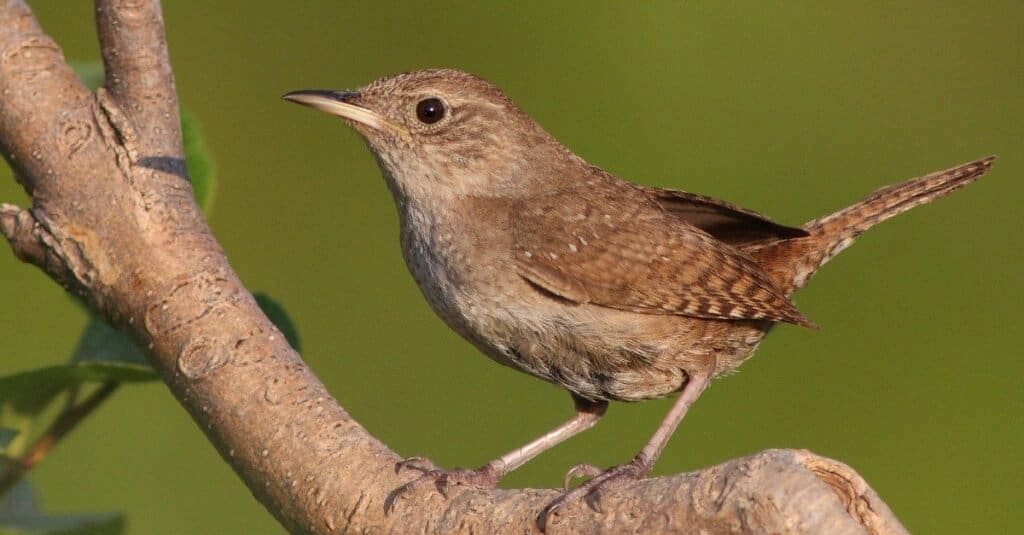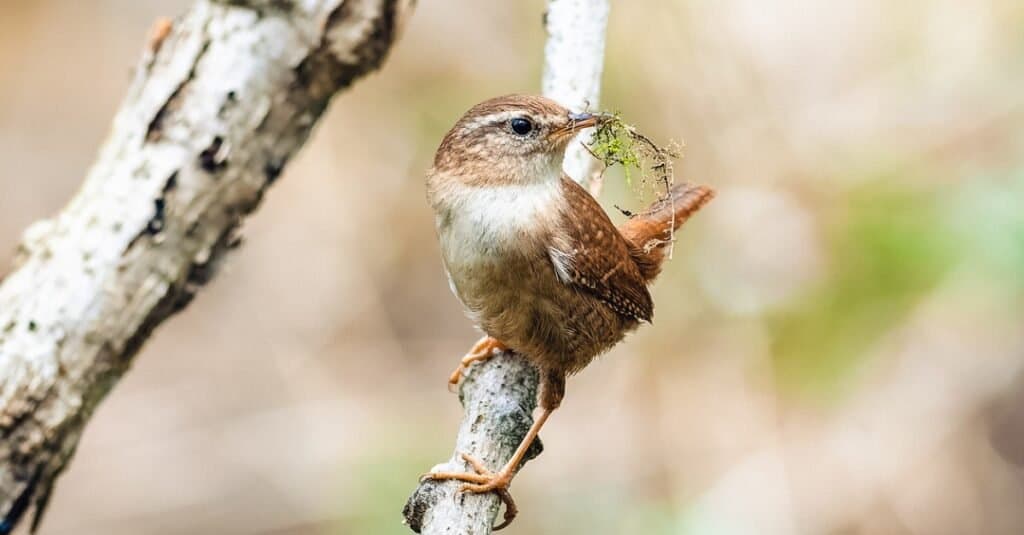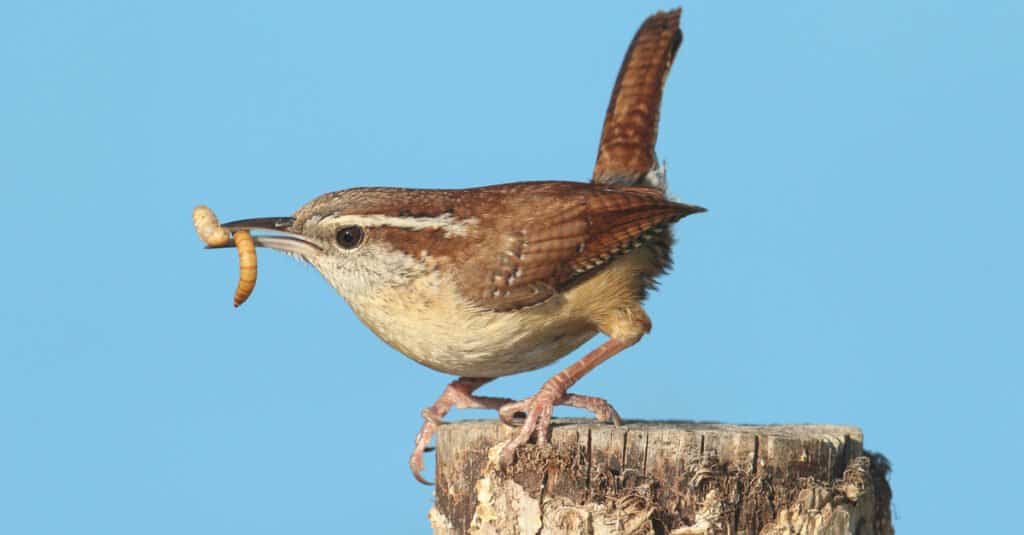Wrens might be the most adorable birds on Earth! They’re small and fuzzy and cute as a button! But what other qualities make them so special? Well, first off, they can sing like nobody’s business (which is probably why their call sounds like someone saying “wren”).
Second, these little guys have an incredible sense of timing that lets them know when to start singing at dawn or dusk, which is perfect for those who love to wake up with the sound of songbirds in the morning. And third (but not least), you should know that wrens are one of only two North American species that live year-round in Central America. So if you’ve been captivated by these adorable birds, you might be wondering what do wrens eat? We’ll dive into all the details below!
What do Wrens Eat?

House wren (Troglodytes aedon) in spring in a tree.
©iStock.com/mirceax
Wrens eat insects, spiders, and other invertebrates. They also enjoy eating fruits and berries, which can be found in bushes and trees. However, depending upon the habitat where they are located, their diet may vary.
For example, some species of wren, such as the house wren, may tilt their diet toward a variety of fruits and insects. However, others will only eat a much stricter percentage of insects and spiders.
The types of food wrens eat can include:
- Insects
- Spiders
- Fruits and berries
- Grasshoppers
- Worms
- Caterpillars
- Beetles
- Seeds a
- Crickets
- Mealworms
- Waxworms
How Do Wrens Hunt For Food?
Some wrens, such as the house wren, will forage for their food on the ground. They will search through leaves and underbrush for insects, spiders, and other small creatures.
Other species of wrens, such as the winter wren, will search for food in trees and bushes. They will eat the fruits and berries that are found on these plants. Wrens will also catch insects in the air by flying out to snatch them with their beaks.
What Do Different Wren Species Eat?

The House Wren building a nest with the building material in its beak.
©iStock.com/Jan Rozehnal
There are 88 species of wren that are divided into 19 types (genera). Let’s dive into the diets of some different wren species.
What Do House Wrens Eat?
House wrens eat small insects, worms, spiders, and larvae. They mainly forage on the ground but will also hover to pick prey from leaves and bark. House wrens will also eat flying insects that they can catch in mid-air.
If you’re building a bird-feeder or want to attract house wrens consider mealworms, bark butter, or sunflower chips.
Winter Wren
Winter wrens are more commonly found in evergreen forests. As with most wrens their diet is heavy in insects ranging from flies, to ants, to millipedes, and spiders. However, they will also consume more northerly vegetation such as juniper berries as well.
Eurasian Wren
One of the most widespread wrens, found in Europe, North Africa and temperate Asia. The Eurasian Wren eats insects, spiders and other small invertebrates, including earthworms. It also eats berries, fruits and nectar.
What Do Carolina Wrens Eat?

Carolina wrens eat suet and peanuts in addition to their usual insect diet
©Steve Byland/Shutterstock.com
Carolina wrens eat suet, peanuts, and insects ranging from caterpillars to beetles.
The majority of a Carolina wren’s diet comes from insects rather than nuts or other non-carnivorous sources. However, with their calls that can be heard across long distances, many bird enthusiasts wish to attract Carolina wrens to their feeders.
If attracting Carolina wrens to feeders, keep in mind that during the winter (especially in their northerly range), supply of insects will be limited. For this reason, wrens will be attracted to feeders that supply both suet and peanuts. Mealworms are also a favorite of Carolina wrens.
The Top Feeder Foods for Wrens
It’s important to remember that most wren species primarily eat insects. As such, if you wish to attract wrens to a feeding station the top options are foods like mealworms, crickets, and grasshoppers. However, especially when wrens are struggling to find insects in more northerly environments, they may be drawn to more options such as peanuts and sunflower seeds.
The photo featured at the top of this post is © Gualberto Becerra/Shutterstock.com
Thank you for reading! Have some feedback for us? Contact the AZ Animals editorial team.






